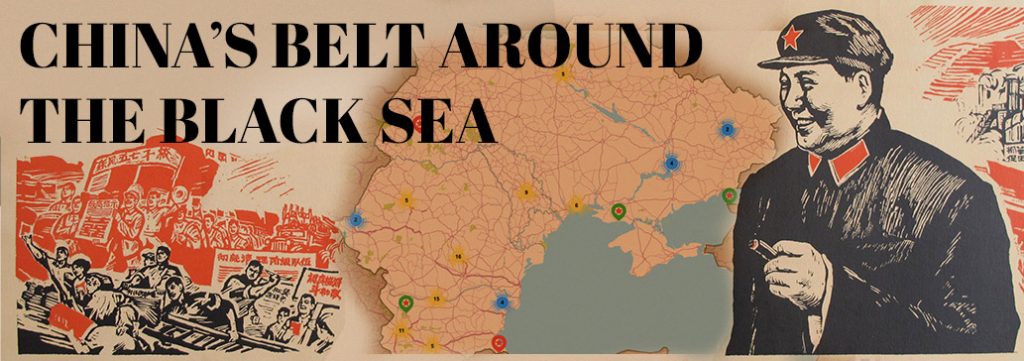CHINA’S BELT AROUND THE BLACK SEA

CHINA’S BELT AROUND THE BLACK SEA
Click on the pins (a green one stands for a successful business/project, a red one for a failure) to see the name of the companies, then click on the company name in the box to read the story. Zoom in for more pins (click on the blue and yellow circles).
At the end of 2019, China was galloping towards the world economic domination goal as many analysts had predicted for some years it would happen. Only a few months later, though, surviving was the key word. Of course, the coronavirus pandemic was the game changer. In the East, around the Black Sea, China’s investments’ march before the COVID-19 struck had been pictured as triumphant. But was it really? How influent is in fact China, in business terms, in countries around the Black Sea? Do countries such as EU members Romania and Bulgaria or states like Moldova and Ukraine have to rely on Chinese money to have good economic performances? Or that’s rather what the Chinese propaganda would like people to think?
Agriculture, telecommunications, infrastructure, energy, trade. These are the fields targeted by China in the East. With a variable success.
Agriculture seems to be successful in Ukraine, Romania and Bulgaria, provided that it’s not carried out in partnership with the state. And figures are important: the most successful Chinese company in all three states is COFCO, the Chinese grain trading giant that had EUR 900 million revenues in Romania alone in 2018.
In the field of telecommunications, Huawei has no competition from other Chinese companies and is very close behind huge players such as Samsung and Apple.
Infrastructure, especially road infrastructure, has a moderate to small success: although there up to four large Chinese companies which bid for public contracts around the Black Sea, they either lack political support (a key factor in Eastern Europe) – therefore they are not awarded contracts, or – if they happen to get contracts – big chances are that they will abandon the project (for various reasons).
Energy offers more earning options, especially renewable energy. Bulgaria and Ukraine could be considered cases of moderate success. However, the great winning tickets are still matters of too great importance to only be decided within the countries around the Black Sea: the construction of two nuclear reactors in Cernavoda, Romania, by a Chinese state group was abandoned after five years of negotiations, while a nuclear power plant in Belene, Bulgaria, is still only an intention – the investor selection procedure is underway and a Chinese company placed a bid, but things don’t seem to get soon to an end.
Chinese trade companies are present in all these four countries, but business figures are not spectacular when looking at the big picture.
“China’s belt around the Black Sea” inventories China’s economic interests in the Black Sea region, both in terms of intention (proposals that seemed a hit at first but now are just plans on paper or projects which started but stopped), and practice. In the first stage of the project, the countries targeted are:
„China’s belt around the Black Sea” (a project carried out by the LINX Association of Investigative Journalists in Romania with help from Oleg Oganov and Fedir Sydoruk in Ukraine, Stanimir Vaglenov in Bulgaria and Vitalie Calugareanu in Moldova) was made possible thanks to a grant provided by the Black Sea Trust, a Project of the German Marshall Fund of the United States. Opinions expressed in this publication do not necessarily represent those of the Black Sea Trust or its partners.
